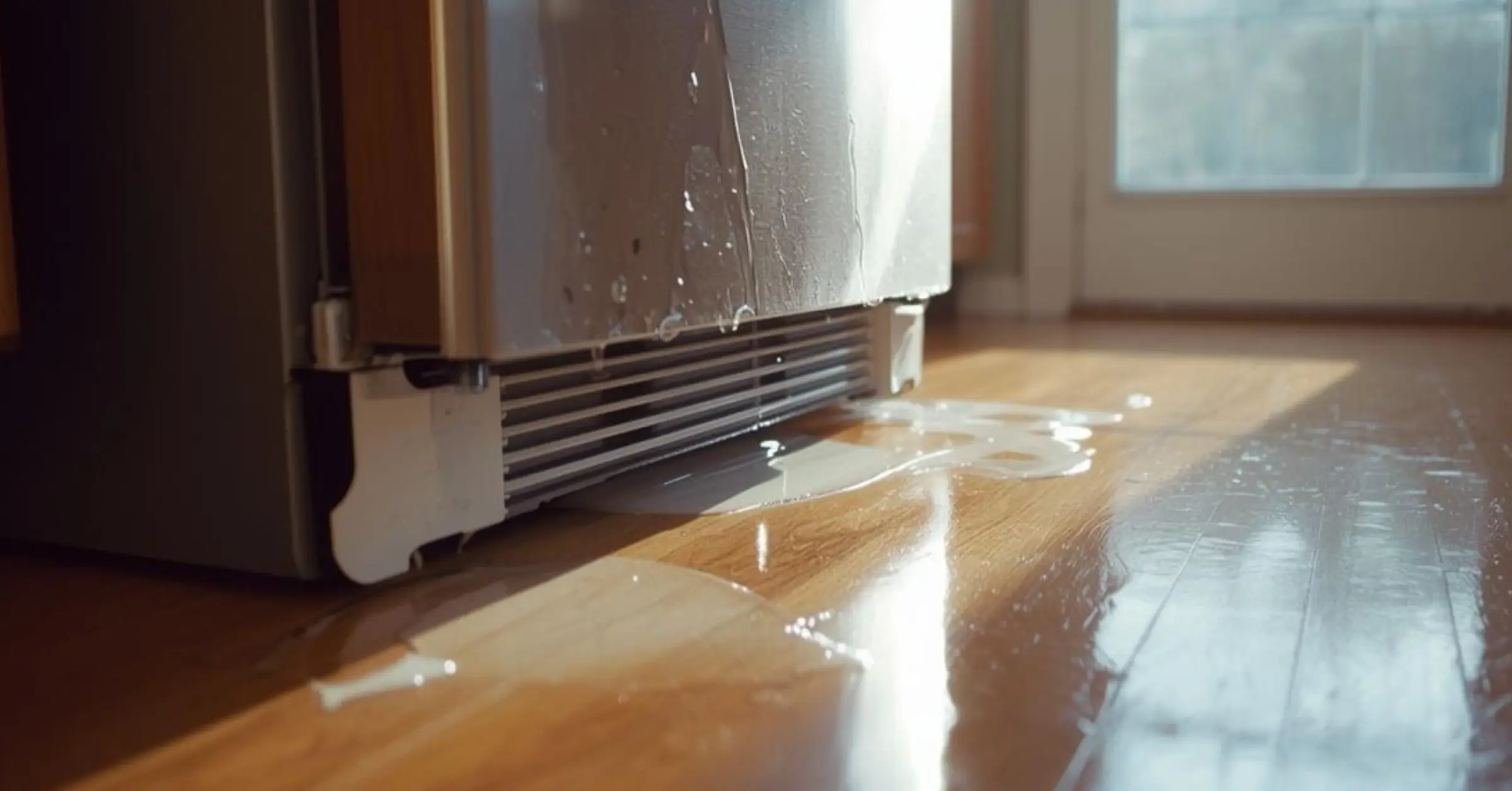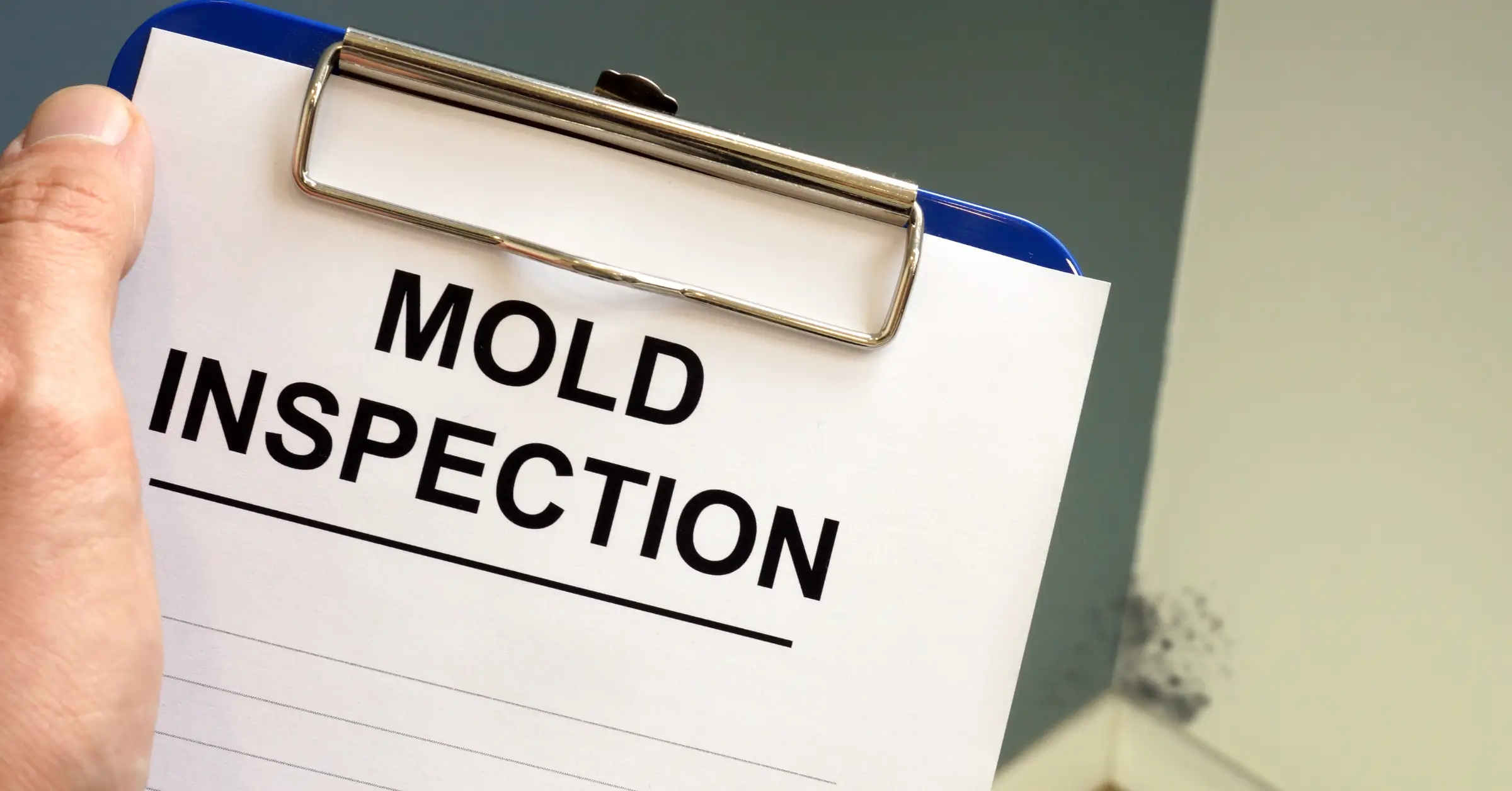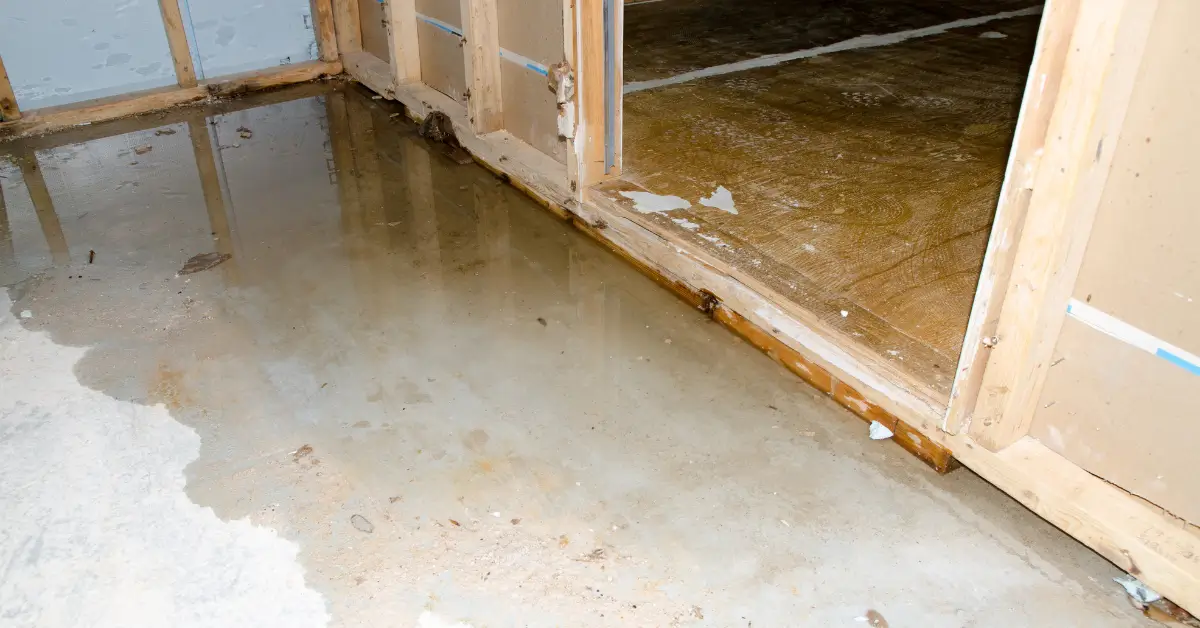Getting mold found during home inspection can feel scary. But don’t worry – it happens more often than you think. When inspectors discover mold during a home inspection, it doesn’t always mean the deal is over. Knowing what to expect when mold found during home inspection helps you make smart choices about your future home.
About 28% of people have genes that make them sensitive to mold. That’s why it’s important to handle mold found during home inspection the right way. The good news? Most mold problems can be fixed when you know what steps to take.
What Happens First When Mold Found During Home Inspection
When mold found during home inspection, the inspector will document it in their report. Home inspectors follow ASHI standards that don’t require them to test for mold. Instead, they report what they can see. The inspector might find mold in basements, attics, bathrooms, or near windows where moisture builds up.
Most inspectors take photos of mold found during home inspection. These pictures become important evidence for your next steps. The inspector will also note the location and size of the moldy area. This information helps you understand how serious the problem might be.
Your inspector might also look for signs of water damage when mold found during home inspection. According to the CDC, mold needs moisture to grow. Finding the water source is just as important as finding the mold itself.
Step 1: Don’t Panic When Mold Found During Home Inspection
The first thing to remember when mold found during home inspection is that mold exists everywhere. The EPA explains that mold spores are always in the air. The problem happens when mold starts growing inside your home.
Small amounts of mold found during home inspection might not be a deal-breaker. Many homes have minor mold issues that can be cleaned up easily. The key is understanding the difference between surface mold and mold that indicates bigger problems.
When mold found during home inspection covers less than 10 square feet, you might be able to clean it yourself. However, larger areas of mold found during home inspection usually need professional help. Professional mold remediation services have the right tools and knowledge to handle bigger mold problems safely.
Remember that some types of mold found during home inspection are more serious than others. Black mold can be particularly concerning and usually requires professional attention.
Step 2: Get Professional Testing When Mold Found During Home Inspection
While home inspectors can spot visible mold, they can’t tell you what type it is. When mold found during home inspection, you might want to hire a mold specialist for testing. These experts can identify the specific type of mold and how much is present.
However, the EPA says testing isn’t always necessary. If you can see mold growth, the important thing is removing it safely. Testing becomes more useful when mold found during home inspection is hidden or when someone in your family has health issues.
Professional mold testing when mold found during home inspection usually costs between $300 and $800. The tester will take air samples and surface samples. These tests can tell you if the mold found during home inspection is dangerous and how far it has spread.
Some people skip testing when mold found during home inspection and go straight to removal. This approach works if the mold area is small and you don’t have health concerns. But testing helps you understand if there’s hidden mold you can’t see.
Step 3: Understand Your Options When Mold Found During Home Inspection
When mold found during home inspection, you have several choices. You can ask the seller to fix the mold problem before closing. You can negotiate a lower price to cover mold removal costs. Or you can walk away from the house entirely.
Many buyers successfully negotiate when mold found during home inspection. Sellers often agree to professional mold removal because they want to complete the sale. Getting a free mold inspection estimate helps you understand the real cost of fixing the problem.
Some contracts include mold contingencies. These clauses protect buyers when mold found during home inspection exceeds certain limits. If your contract doesn’t have this protection, you might still be able to negotiate based on the inspection findings.
The location of mold found during home inspection affects your options. Mold in easily accessible areas costs less to remove than mold behind walls or in crawl spaces. Surface mold on bathroom tiles is different from mold found during home inspection that indicates structural water damage.
Step 4: Consider Health Impacts When Mold Found During Home Inspection
Your family’s health should be a top priority when mold found during home inspection. The CDC warns that mold can cause stuffy noses, sore throats, coughing, and skin irritation. People with asthma or mold allergies may have more serious reactions.
Children and elderly family members face higher risks when mold found during home inspection goes untreated. If anyone in your family has breathing problems or immune system issues, take mold found during home inspection very seriously.
The good news is that most health effects from mold found during home inspection go away once the mold is removed and the area is properly cleaned. However, some people develop long-term sensitivity after exposure to certain types of mold.
When mold found during home inspection, ask about the home’s history. Has there been flooding or major water leaks? How long has the mold been growing? Older mold problems that weren’t addressed properly might have caused more damage.
Step 5: Plan for Professional Removal When Mold Found During Home Inspection
Large areas of mold found during home inspection need professional remediation. The EPA provides guidelines for proper mold removal that most homeowners can’t safely follow on their own.
Professional mold removal when mold found during home inspection involves several steps. First, experts seal off the moldy area to prevent spores from spreading. Then they remove contaminated materials and clean everything with special equipment.
The cost of fixing mold found during home inspection depends on the size and location. Small bathroom mold might cost $500 to $1,500 to remove. Large basement mold problems can cost $3,000 to $10,000 or more. Getting multiple estimates helps you understand the true cost.
Don’t forget about preventing future mold when dealing with mold found during home inspection. Water damage restoration might be needed to fix the underlying moisture problem. Otherwise, the mold will just come back.
Insurance Coverage for Mold Found During Home Inspection
Many people wonder if insurance covers mold found during home inspection. Most standard homeowner’s insurance policies don’t cover mold removal. However, if the mold resulted from a covered water damage event, you might have some protection.
When mold found during home inspection stems from a burst pipe or sudden leak, insurance might cover the water damage cleanup. But insurance companies often exclude mold that develops from long-term moisture problems or poor maintenance.
Some insurance policies offer mold coverage as an add-on. This extra coverage can help when mold found during home inspection requires expensive remediation. Check with your insurance agent about mold coverage before you buy the home.
Documentation becomes crucial when mold found during home inspection and you’re dealing with insurance. Keep all inspection reports, photos, and professional estimates. This paperwork might be needed if you file a claim later.
Hidden Mold Concerns When Mold Found During Home Inspection
Sometimes visible mold found during home inspection indicates larger hidden problems. Mold behind walls, under flooring, or in ductwork might not show up in a standard inspection. Professional mold inspectors use special tools to detect hidden mold.
Moisture meters and thermal imaging cameras can reveal water problems that lead to hidden mold. When mold found during home inspection, these tools help experts determine if there’s more mold you can’t see. This information affects the scope and cost of remediation.
Some signs suggest hidden mold even when only small amounts are visible during inspection. Musty odors, water stains, or warped materials might indicate larger mold problems. Finding water leaks becomes important for discovering hidden mold sources.
Hidden mold found during home inspection often costs more to remediate. Accessing mold behind walls or under floors requires removing building materials. This extra work increases both time and expense for mold removal projects.
Preventing Future Mold After Mold Found During Home Inspection
Fixing current mold found during home inspection is only part of the solution. Preventing future mold growth protects your investment and your family’s health. The key is controlling moisture in your home.
Proper ventilation helps prevent conditions that allow mold to grow. Bathroom fans, kitchen exhaust fans, and adequate attic ventilation all help control humidity. When mold found during home inspection, check if these systems are working properly.
Regular maintenance prevents many problems that lead to mold growth. Prompt water leak repairs stop mold before it starts. Cleaning gutters, maintaining HVAC systems, and fixing roof problems all help prevent moisture issues.
Keep indoor humidity below 50% to prevent mold growth. Dehumidifiers can help in damp areas like basements. When mold found during home inspection, ask about the home’s typical humidity levels and what equipment might be needed.
Working with Contractors When Mold Found During Home Inspection
Choosing the right contractor is crucial when mold found during home inspection requires professional remediation. Look for companies that are licensed, insured, and experienced with mold removal. Ask for references and check online reviews.
Good mold remediation contractors follow industry standards when mold found during home inspection. They should explain their process, provide written estimates, and use proper safety equipment. Avoid contractors who offer unusually low prices or guarantee unrealistic timelines.
Some contractors offer additional services when mold found during home inspection. Insurance claim support can help navigate coverage issues. Some companies also handle the underlying water damage that caused the mold problem.
Get multiple estimates when mold found during home inspection requires professional work. Prices can vary significantly between contractors. However, don’t choose based on price alone – experience and reputation matter more for mold remediation projects.
Timeline for Resolving Mold Found During Home Inspection
The timeline for addressing mold found during home inspection depends on several factors. Small mold problems might be resolved in a few days. Large or complex mold issues can take weeks to remediate properly.
Testing adds time when mold found during home inspection. Lab results typically take 3-5 business days. If you’re buying a home, factor this time into your closing timeline. Some sellers agree to extend deadlines when mold testing is needed.
Professional mold removal when mold found during home inspection follows a specific sequence. Initial assessment and planning take 1-2 days. The actual remediation work can take anywhere from 2-10 days depending on the size and complexity of the project.
Post-remediation testing adds another few days to verify that mold found during home inspection has been properly removed. Many people require this testing before moving into a home. Budget extra time for this final verification step.
When to Walk Away from Mold Found During Home Inspection
Sometimes mold found during home inspection indicates problems too expensive or complex to fix. Extensive mold that suggests structural issues might make a home a poor investment. Trust your instincts when the scope of mold remediation seems overwhelming.
Consider walking away when mold found during home inspection covers large areas throughout the house. Multiple mold locations often indicate systemic moisture problems that cost tens of thousands of dollars to fix properly.
Hidden mold behind walls or in inaccessible areas makes remediation more complex and expensive. When mold found during home inspection requires extensive demolition, the total project cost might exceed the home’s value or your budget.
Health considerations might make mold found during home inspection a deal-breaker. If family members have severe mold allergies or respiratory issues, even properly remediated homes might not be suitable. Your family’s health is more important than any real estate deal.
Getting Expert Help When Mold Found During Home Inspection
Professional help makes a big difference when mold found during home inspection. Experienced contractors understand both the technical and health aspects of mold problems. They can guide you through the entire process from assessment to final cleanup.
Look for contractors who specialize in mold remediation and water damage restoration. Water damage repair expertise is especially important because mold problems often involve fixing underlying moisture issues.
Good contractors provide education when mold found during home inspection. They explain what caused the mold, how to fix it, and how to prevent future problems. This knowledge helps you make informed decisions about the property.
Don’t hesitate to ask questions when mold found during home inspection. Reputable contractors welcome questions and provide detailed explanations. If a contractor seems evasive or unwilling to explain their process, consider working with someone else.
Moving Forward After Mold Found During Home Inspection
Dealing with mold found during home inspection doesn’t have to derail your home purchase. Many buyers successfully navigate mold issues and end up with safe, healthy homes. The key is getting accurate information and working with qualified professionals.
Remember that mold found during home inspection is often fixable. Modern remediation techniques can eliminate mold problems when done properly. Focus on finding the right solutions rather than letting fear drive your decisions.
Document everything when mold found during home inspection. Keep copies of inspection reports, estimates, and any remediation work. This documentation protects you legally and helps with any future insurance claims or resale issues.
If you decide to proceed with a home where mold found during home inspection, make sure all work is completed properly before closing. Get final clearance testing to verify that the mold has been successfully removed and the problem won’t return.
Need help dealing with mold found during home inspection? Professional remediation specialists can assess your situation and provide expert solutions. Contact experienced professionals who understand both the technical and health aspects of mold problems. Don’t let mold found during home inspection stop you from finding your perfect home – get the expert help you need to resolve the issue safely and effectively.


